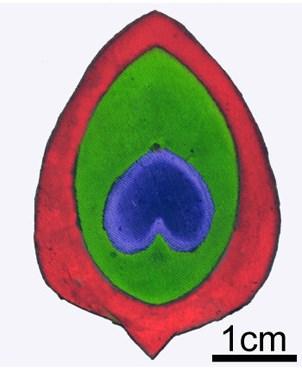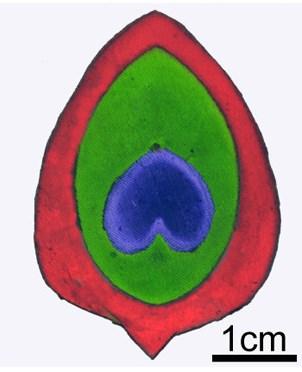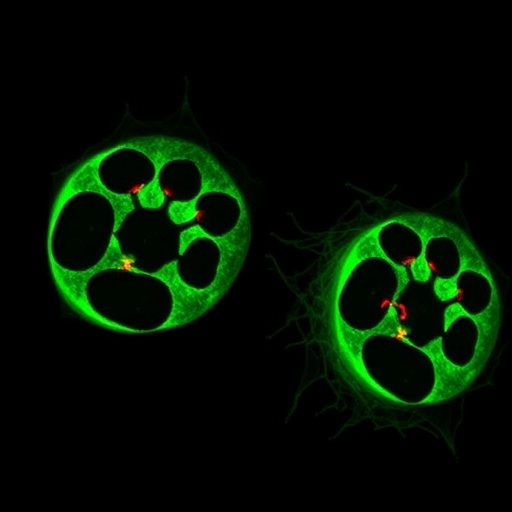
Credit: American Chemical Society
"Fast fashion" might be cheap, but its high environmental cost from dyes polluting the water near factories has been well documented. To help stem the tide of dyes from entering streams and rivers, scientists report in the journal ACS Applied Materials & Interfaces a nonpolluting method to color textiles using 3-D colloidal crystals.
Dyes and pigments are chemical colors that produce their visual effect by selectively absorbing and reflecting specific wavelengths of visible light. Structural or physical colors — such as those of opals, peacock feathers and butterfly wings — result from light-modifying micro- and nanostructures. Bingtao Tang and colleagues wanted to find a way to color voile textiles with structural colors without creating a stream of waste.
The researchers developed a simple, two-step process for transferring 3-D colloidal crystals, a structural color material, to voile fabrics. Their "dye" included polystyrene nanoparticles for color, polyacrylate for mechanical stability, carbon black to enhance color saturation and water. Testing showed the method could produce the full spectrum of colors, which remained bright even after washing. In addition, the team said that the technique did not produce contaminants that could pollute nearby water.
###
The authors acknowledge funding from the National Natural Science Foundation of China, the Fundamental Research Funds for the Central Universities (China), and Dalian University's Program for Innovative Research Team, Program for Liaoning Excellent Talents and Program for New Century Excellent Talents.
The abstract that accompanies this study is available here.
The American Chemical Society is a nonprofit organization chartered by the U.S. Congress. With nearly 157,000 members, ACS is the world's largest scientific society and a global leader in providing access to chemistry-related research through its multiple databases, peer-reviewed journals and scientific conferences. ACS does not conduct research, but publishes and publicizes peer-reviewed scientific studies. Its main offices are in Washington, D.C., and Columbus, Ohio.
To automatically receive news releases from the American Chemical Society, contact [email protected].
Follow us on Twitter | Facebook
Media Contact
Katie Cottingham
[email protected]
301-775-8455
@ACSpressroom
http://www.acs.org
############
Story Source: Materials provided by Scienmag





